In the ever-evolving landscape of modern football, few coaches have made as profound an impact as Roberto De Zerbi. Leading Brighton to their inaugural European campaign, De Zerbi’s tactical prowess has not only rewritten the club’s history but has also left an indelible mark on the global football stage. This article delves into the tactical intricacies that define Brighton under De Zerbi’s guidance, focusing on their strengths, vulnerabilities, and the captivating evolution of their playing style.
Build-up
Low Build-up
De Zerbi and Brighton’s biggest tactical strength is arguably the build-up. In the low build-up, Brighton line up in a 1-4-2-2-2 formation:
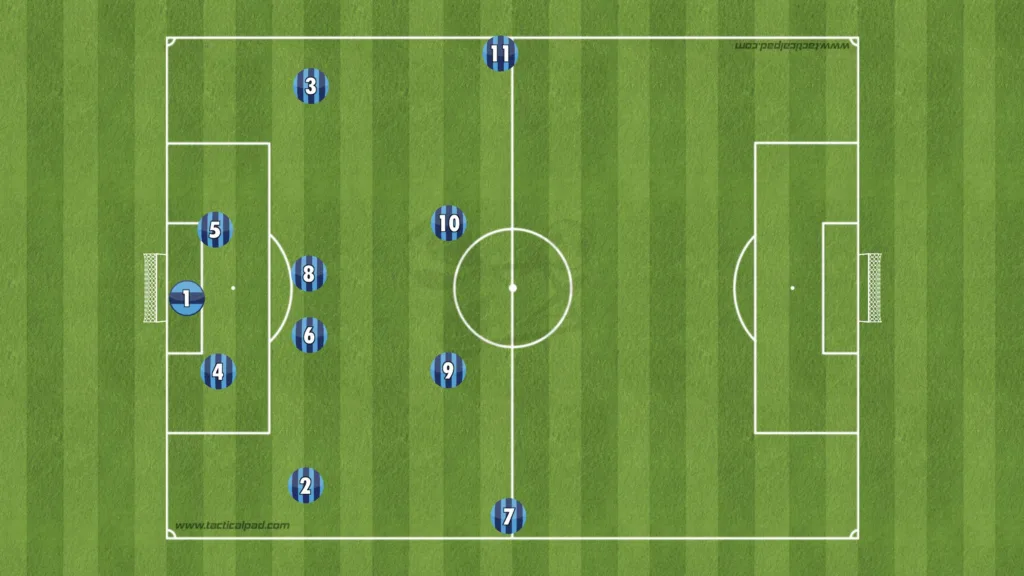
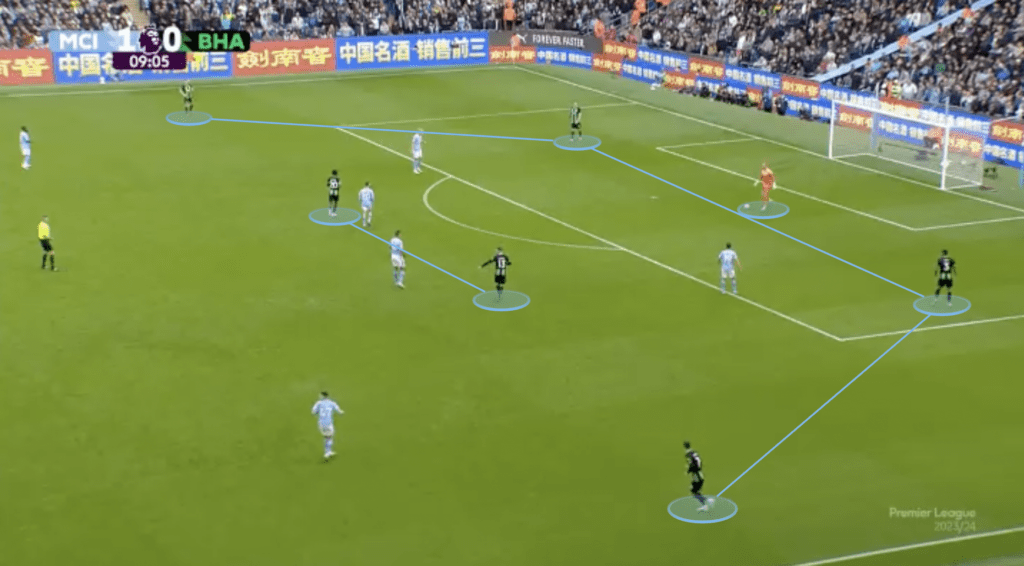
They build with seven players: The goalkeeper, a back four, and the two holding midfielders in a 1-4-2 shape. The wingers are high and wide, and the two number tens position themselves between the opposition backline and midfield line. Many teams defend in a 1-4-4-2 formation, and if they do, the position of the number tens forces the opposition center-backs to make a decision:
If they push up, the space behind them opens up, giving the winger a 1v1 against the fullback.
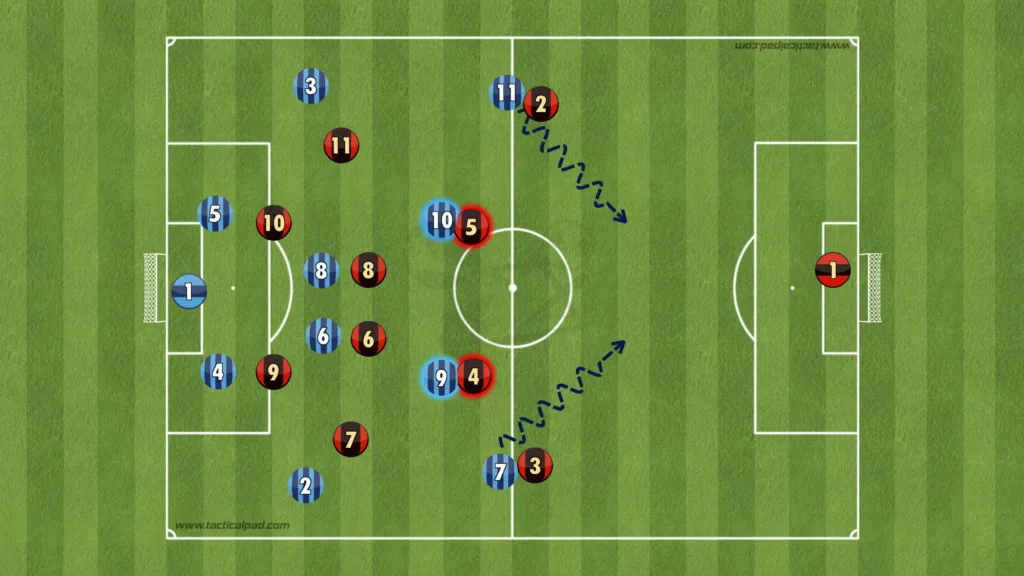
If they do not push up the number tens, a numerical superiority gets created in the midfield, and Brighton should be able to play through the press.
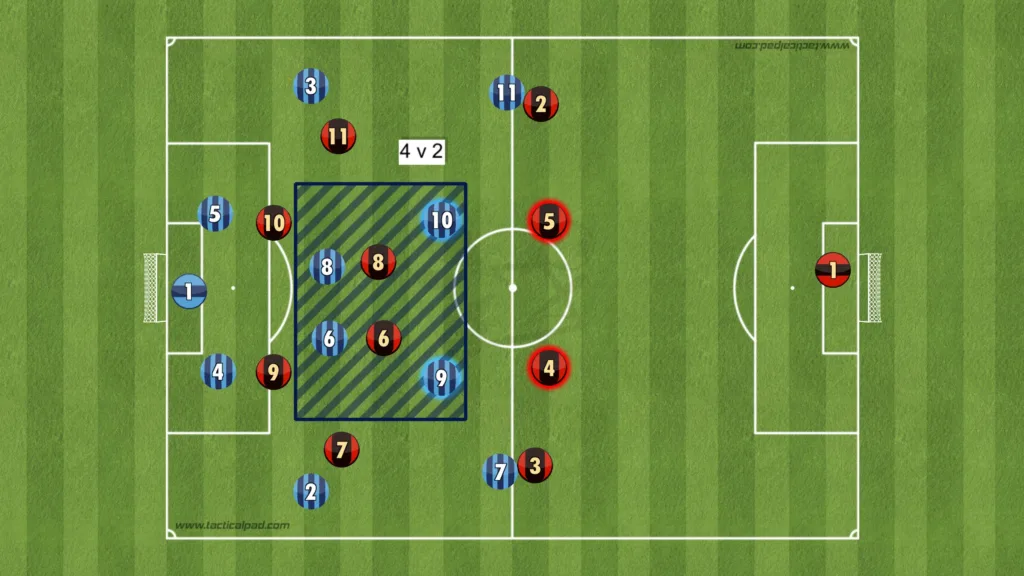
Some teams try to solve this by dropping one of the strikers into the midfield to create a 1-4-5-1 formation, thus creating a numerical advantage against the two number tens.
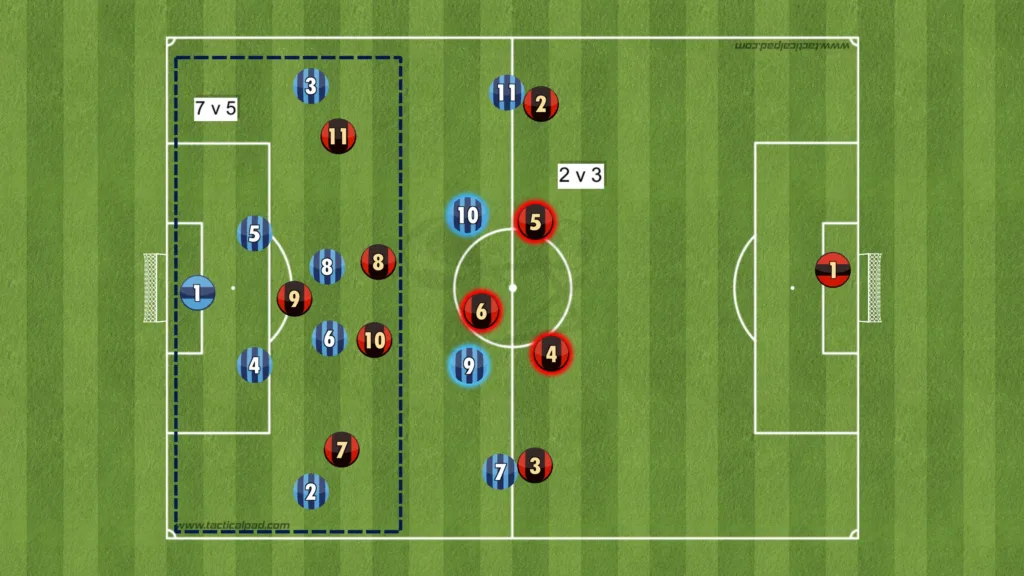
However, this gives Brighton a numerical advantage against the opposition pressing line which they should be able to play through. Dropping even more players will stop Brighton from creating goalscoring opportunities from the low build-up, however, they will easily beat the press and progress to the high build-up.
High Build-up
In the high build-up, De Zerbi changes the formation to either a 1-2-3-5:
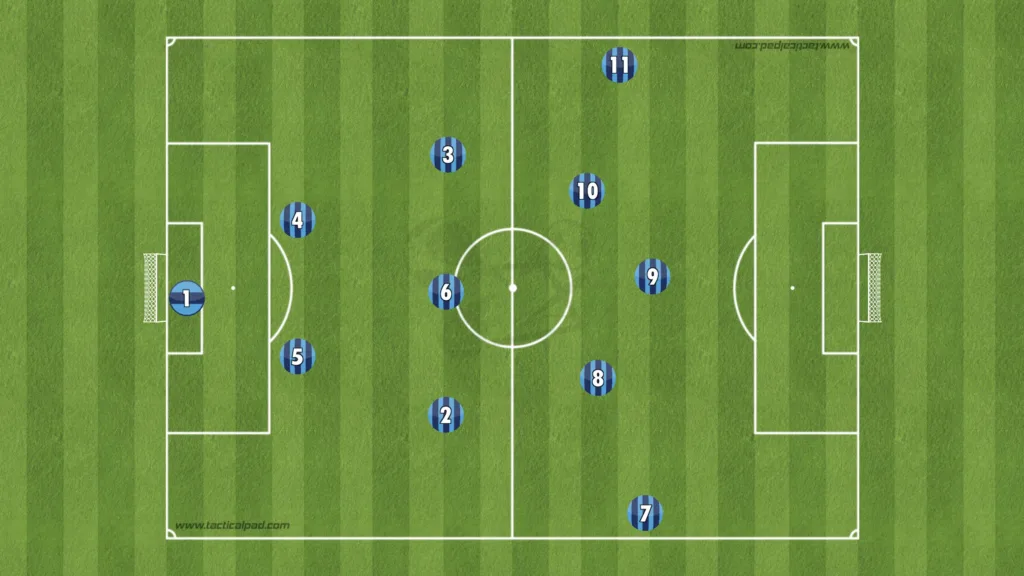
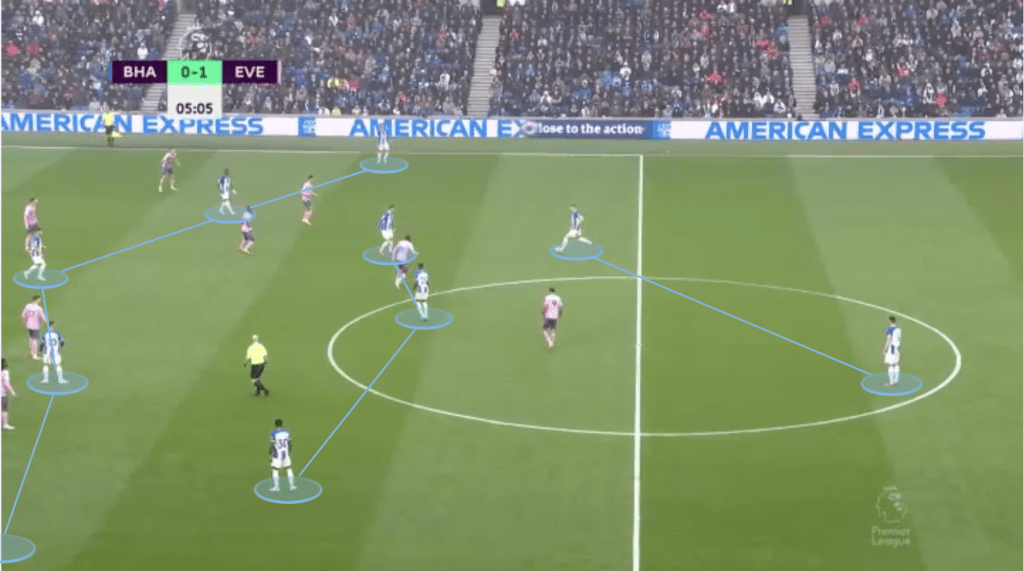
Or, as they have done this year(2023/24), a 1-3-1-5-1:
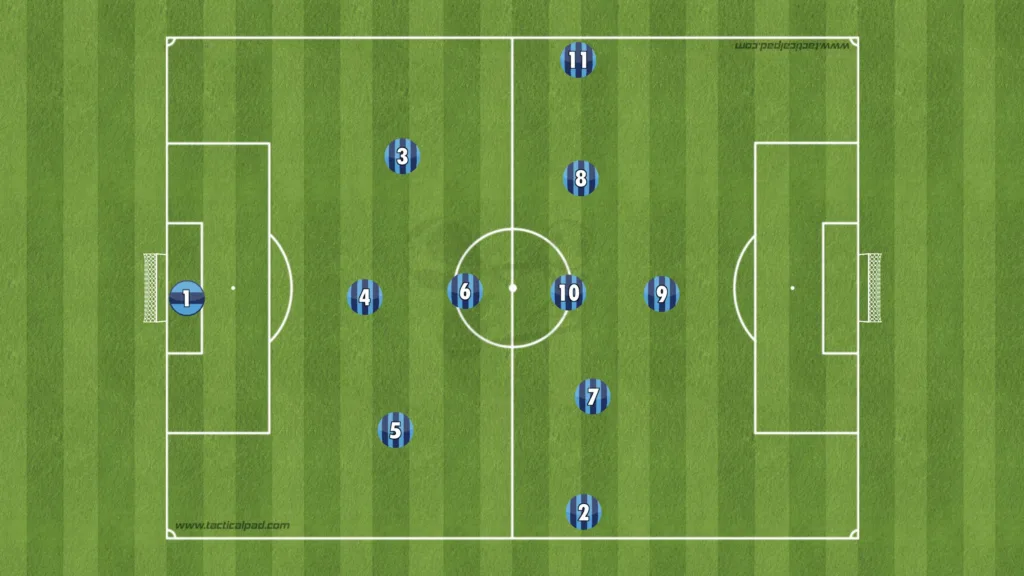
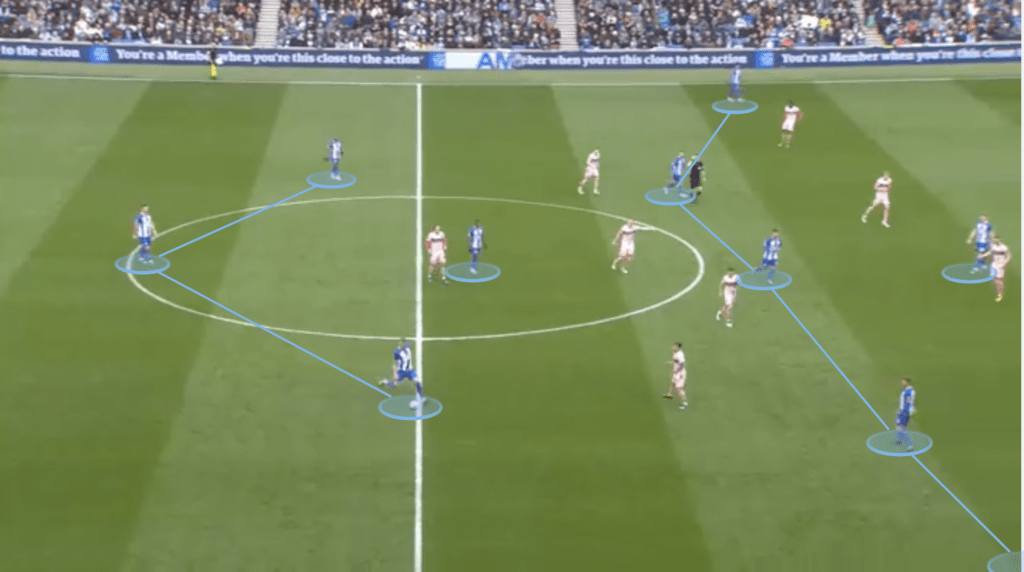
De Zerbi likes having only one wide player in the high build-up. This is because he prioritizes playing through the middle. He needs one player high and wide to pull apart the backline. The rest of the players create numerical advantages in the midfield areas. Another purpose for keeping the majority of the players centrally is that it shortens the length of the passes. This naturally shortens the time between passes and the opposition players will have less time to push up and press.
Principles and Tools
De Zerbi has throughout his managerial career always looked to play an attacking and offensive football, regardless of the opposition. One of his key principles in doing this is to play where the space is. Brighton look to play fast in behind high-pressing teams, but often relax with the ball, waiting for the right opportunities, when playing against a low-block.
Another essential principle of Brighton’s system is creating numerical advantages. Brighton constantly look to create 3v2 and 2v1 situations, and it is through these that they progress the ball through the opposition lines. Using the goalkeeper in possession is an important aspect of that. The third-man principle is also a vital tool in following this principle:
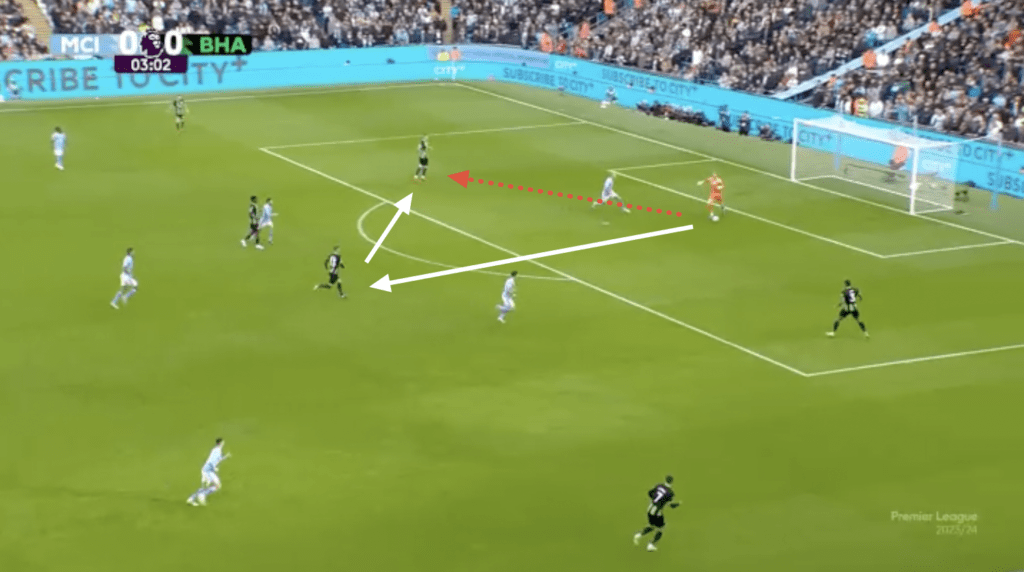
Another important tool for progressing the ball is following the pressure:
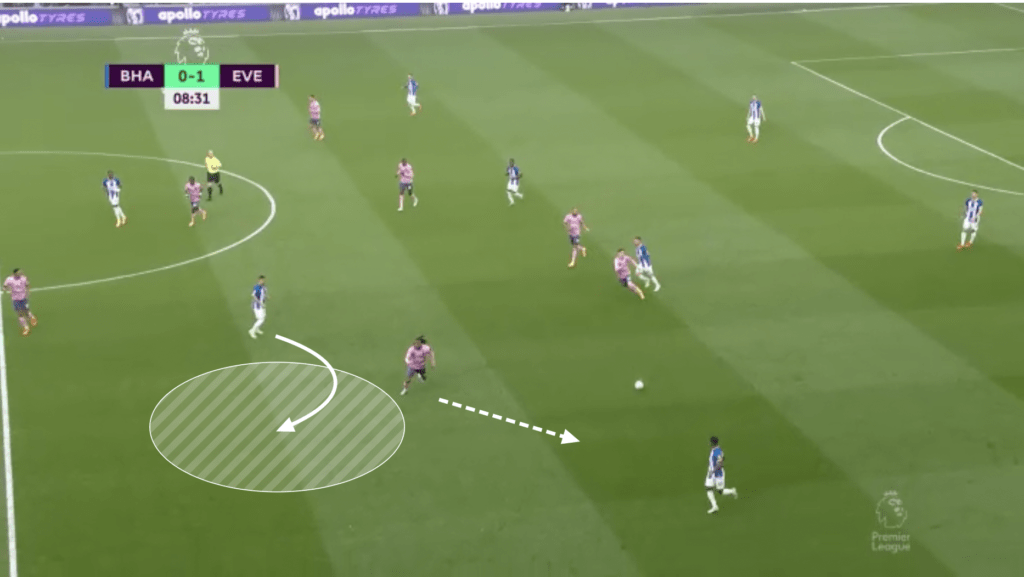
This means running into the space that the pressing player is leaving behind.
A third important principle in De Zerbi’s game plan is to control the tempo of the game. Brighton are masters at changing the tempo with a few quick passes to break lines after having the ball for a long time. One tool that helps control the game is for the center-backs to stand still with the ball:
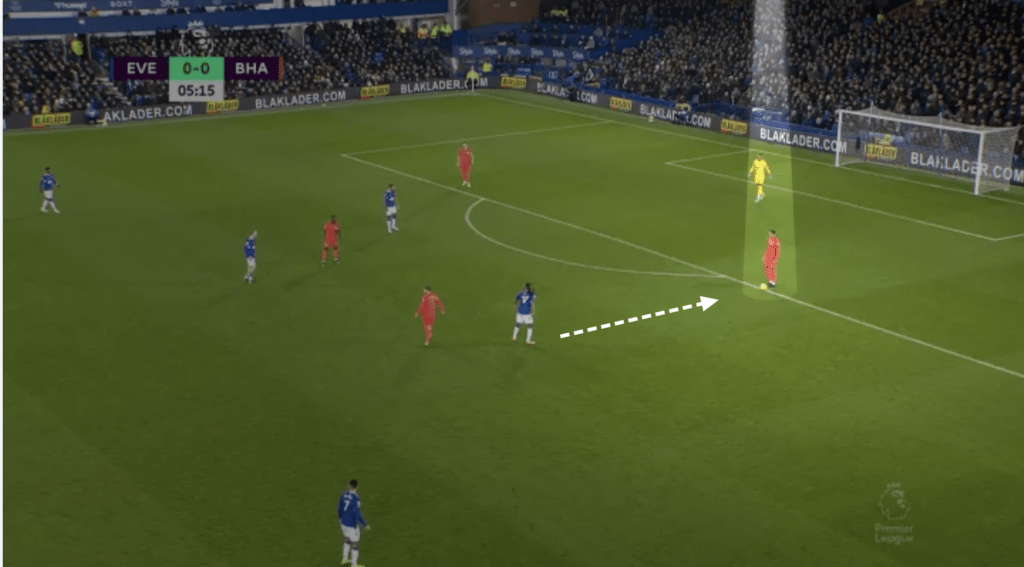
They do this for two reasons:
1.) It enables the center-back to play the ball to either side
2.) It lures the press while still having control of the ball
Defending
Pressing
Brighton place a lot of value in being aggressive without the ball. This shows in their high pressure. Brighton usually go man-to-man and vigorously press the opposition:
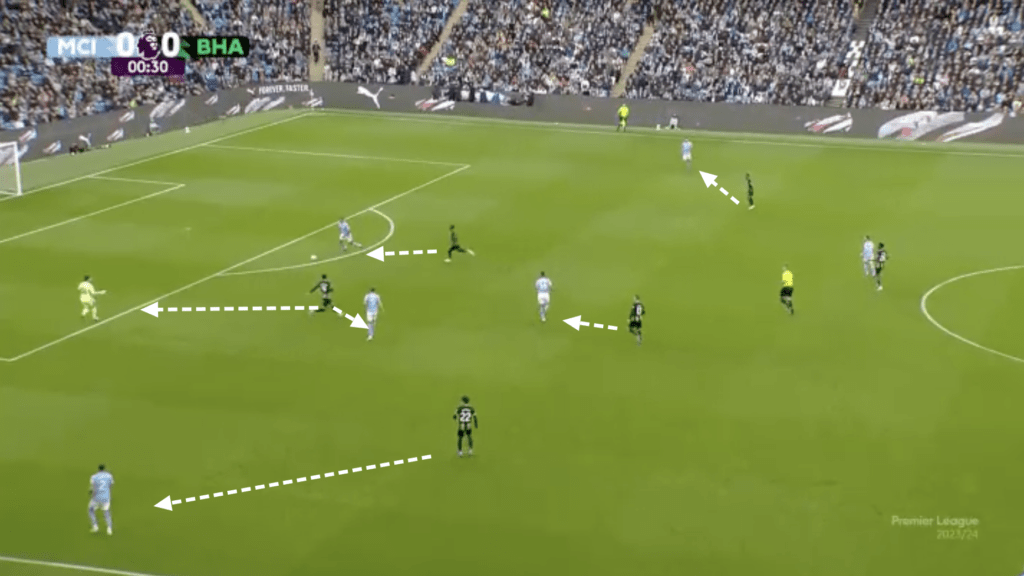
They do this because of their principle of being the team controlling the tempo, therefore always wanting to have possession.
Defensive transitions
In addition, positioning many players centrally, creating a numerical advantage in the midfield, creates good conditions in defensive transitions. Many players close to the ball after losing possession means that many players can work towards regaining possession. This is another reason why De Zerbi likes to have a lot of players in central positions.
Weaknesses
One of the only weaknesses of Brighton and De Zerbi’s tactical setup is that they sometimes are very open on the counterattacks. De Zerbi likes having a lot of players in central and offensive positions during the high build-up. This helps Brighton in the counterpress. If they, on the other hand, do not regain possession during the counterpressing phase, they often open up opportunities for dangerous counterattacks.
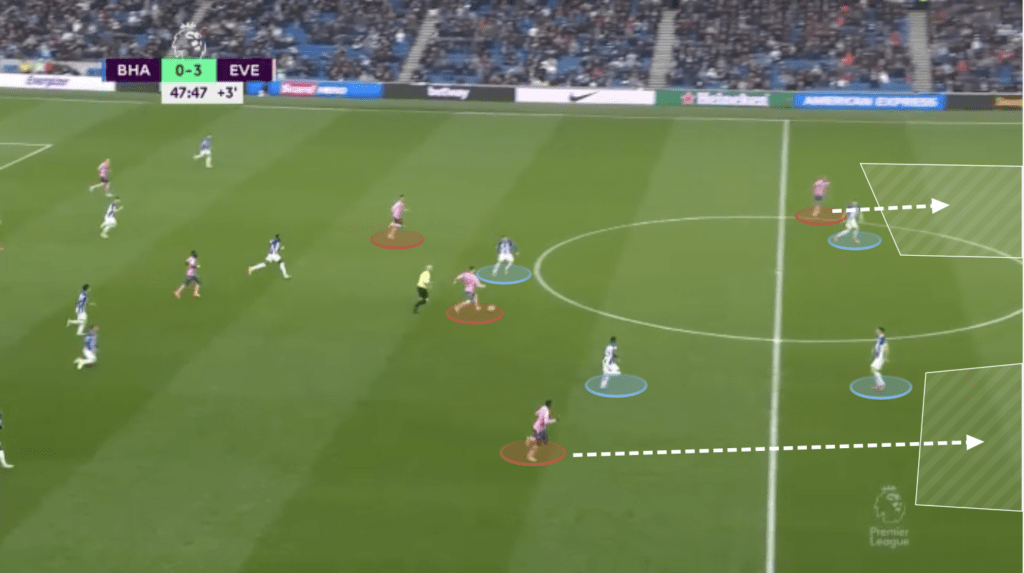
Final Thoughts
In conclusion, Roberto De Zerbi’s transformative influence on Brighton has not only marked a historic European run for the club but has also brought forth a distinctive and mesmerizing playing style that captivates football fans globally. Delving into the tactical intricacies of Brighton under De Zerbi’s guidance, we witness a team adept at both low and high build-up phases. The tactical strengths, such as the ability to create numerical advantages and control the tempo, showcase De Zerbi’s commitment to an attacking and offensive football philosophy.
As De Zerbi continues to carve his path as one of the most influential coaches in modern football, his tactical understanding, commitment to principles, and strategic adaptability position him as a figure destined for coaching some of the biggest teams in the future. The journey of Brighton under his stewardship not only reflects the evolution of the club but also provides a fascinating study of football tactics at the highest level.
